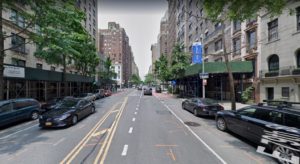This article on the history of the Upper East Side is brought to you by the Upper East Side workers’ comp lawyers of The Disability Guys.
The Upper East Side is a neighborhood in the borough of Manhattan that sits between Central Park/Fifth Avenue, 59th Street, 96th Street, and the East River.
The Historic Beginning Of The Upper East Side
Long before any Europeans arrived in America, the Lenape fished and lived in the area that is now called the Upper East Side. In the early  1600s, Dutch settlers made their way into the area and began to set up settlements throughout New York. Control of the area switched back and forth between the Dutch and British on several occasions until finally the British took control.
1600s, Dutch settlers made their way into the area and began to set up settlements throughout New York. Control of the area switched back and forth between the Dutch and British on several occasions until finally the British took control.
The British kept control of New York until the end of the Revolutionary War.
After the American Revolution, the Upper East Side continued to grow as farmland. It wasn’t until 1837 when a railroad station was established and this allowed for commercial development to begin. This caused the local population to grow rapidly. In 1878 the El was constructed and helped to link the Upper East Side to other areas of the city.
Despite challenges during the Civil War, World War I, and World War II, the Upper East Side has continued to grow steadily, with farmland disappearing and city blocks being constructed.
Gracie Mansion Becomes The Mayor’s Home
Hundreds of years ago during the Revolutionary War, George Washington took control of a house that sat on the East River called Belview Mansion. Tragically, this historic and beautiful structure was destroyed by the British during the war so that it couldn’t be strategically used by Washington and his allies.
After the war in 1799, Archibald Gracie built a second Mansion on the same spot. The home was his country home until he sold it in 1823 to pay off debts. Several others owned the home and then in 1896, the municipal government seized ownership and made the mansion part of the Carl Schurz Park. Over the following decades, the house was used as an ice cream stand, a location for public restrooms, and even classrooms. Then, from 1924 to 1936, it became a museum and historic house.
In 1942 that all changed when it was decided that it would become the mayoral home. Although it is called the mayoral home, the Mayor does not need to live there.
The Upper East Side Today
Other than the mayor and his/her family, the Upper East Side is also home to nearly 220,000 residents. The neighborhood residents have a median household income of $123,000 and the neighborhood is considered the highest income in relation to the rest of the city.
There are hundreds of things to do and dozens of fabulous places to eat in this amazing neighborhood and those who want to travel to other parts of New York City have easy access to public transportation.
